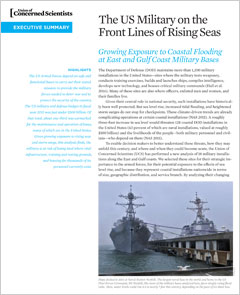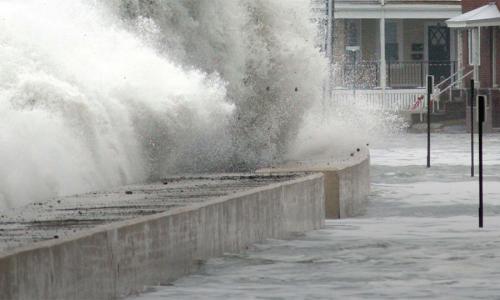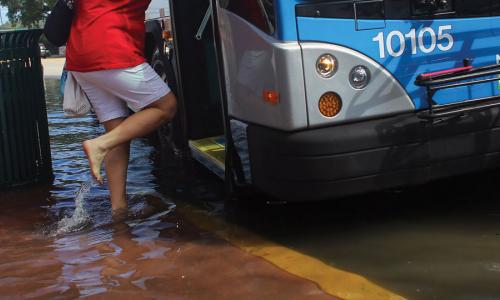Sea levels are rising as global warming heats up the planet. Many military bases along the US East Coast and Gulf of Mexico are at risk of permanently losing land to the ocean in the decades ahead.
As the seas rise, high tides will reach farther inland. Tidal flooding will become more frequent and extensive. When hurricanes strike, deeper and more extensive storm surge flooding will occur.
The US Armed Forces depend on safe and functional bases to protect the national security of our country. We must prepare for the growing exposure of our military bases to sea level rise.
Military bases at risk
18 military installations are included in this analysis. Each location's changing exposure to flooding is projected through the end of the century:
- Maine: Portsmouth Naval Shipyard
- New Jersey: US Coast Guard Station Sandy Hook
- Maryland: US Naval Academy
- Washington, DC: Joint Base Anacostia-Bolling and Washington Navy Yard
- Virginia: Joint Base Langley-Eustis | Naval Air Station Oceana Dam Neck Annex | Naval Station Norfolk
- North Carolina: Marine Corps Base Camp Lejeune
- South Carolina: Marine Corps Recruit Depot Parris Island and Marine Corps Air Station Beaufort
- Georgia: Hunter Army Airfield | Naval Submarine Base Kings Bay
- Florida: Naval Air Station Key West | Naval Station Mayport | Eglin Air Force Base






